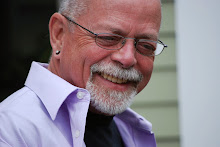Thursday, January 12, 2012
Freedom to feel
Freedom. We are in an election season, and the word is everywhere, but we don’t usually feel we have to ask what it means. For us, the big gay-rights cases before the Supreme Court place the word in a constitutional context. That’s important, but there are other meanings from other sources besides court cases. It is important that gay people know what meaning we assign to the word, so we know what we’re fighting for.
The organization that was formed within a month of the Stonewall Riots in June 1969 was called “Gay Liberation Front.” “Liberation” means, according to the New American Oxford Dictionary, “the act of setting someone free from imprisonment, slavery, or oppression; release: the liberation of all political prisoners.” and also “freedom from limits on thought or behavior: the struggle for women's liberation.”
In my last posting, I quoted two pages from near the end of Part Two of my novel, Ceremonies, in which Dana contemplates Marc, her infant son, and considers what it would be like for him to be truly free. She imagines a time in the future when their culture is characterized by sexual anarchy, when “Marc would be free.” Later in Ceremonies, Deborah and Sally contemplate what freedom means. Sally says, “It must mean something more than the freedom to choose between candidates, or to choose between faiths, or even to choose between ideas. It must reach deeper than that—” Deborah proposes, “Freedom to feel without constraint.” It seems these two middle-aged, middle-class women instinctively understand themselves politically in the terms of the sixties Stonewall revolutionaries.
In December, 1969, when the Gay Activist Alliance (GAA) was formed, its manifesto demanded basic rights, the first of which was “the right to our own feelings. This is the right to feel attracted to the beauty of members of our own sex and to embrace those feelings as truly our own, free from any question or challenge whatsoever by any other person, institution, or moral authority.”
The sixties revolutionaries understood that the form their oppression took—what they were fighting against—was the loss of the right to their own feelings. This is an intimate—and consequently sadistic—kind of oppression. Most queers today might say that, if they feel oppressed, this is the way they experience it: the loss of the ability to feel freely, to recognize what their feelings are, to honor their feelings, because their feelings have been devalued and mocked by the culture they call home.
I like the GAA formula. When I was a child, I knew that there was something wrong with my feelings. Everyone told me that. There were times when I hated my feelings. I was ashamed of them. I didn’t want them to be my own. So the first step toward liberation for a kid like me was to learn that I had a right to my own feelings and that they were truly my own, and they were good.
Information on Gay Activist Alliance and Gay Liberation Front and related matters is drawn from the following two books:
Information on Gay Activist Alliance and Gay Liberation Front and related matters is drawn from the following two books:
David Carter, Stonewall: The Riots that Sparked the Gay Revolution. New York: St Martin’s Griffin, 2004.
David Eisenbach, Gay Power: An American Revolution. New York: Carroll & Graf Publishers, 2006

0 comments:
Post a Comment